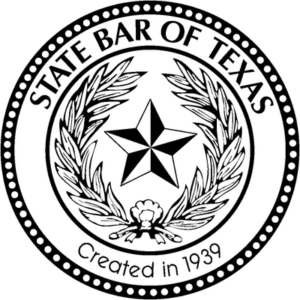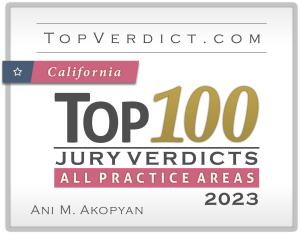Highland Park Employment Lawyers
The Akopyan Law Firm A.P.C. is committed to fighting for the rights of workers in Highland Park who may encounter discrimination, harassment, retaliation, wrongful termination, or other unlawful conduct in the workplace. Additionally, our firm is well-prepared to offer small businesses in Highland Park cost-effective and practical solutions for employment law issues. With extensive experience in handling employment disputes from both the employee and employer perspectives, our team possesses valuable insights into the mindset of the opposing party. This unique perspective significantly contributes to achieving the best possible outcomes for our clients. If you are facing employment-related challenges in Highland Park, whether you are an employee seeking justice or a small business owner seeking effective employment law solutions, the Akopyan Law Firm A.P.C. is here to assist you. We are dedicated to providing exceptional legal representation and guidance to help you navigate these issues successfully. Please reach out to us, and we will be pleased to evaluate your case and discuss how we can assist you.
About Highland Park, California
 Highland Park is a neighborhood in Los Angeles which is home to more than 60,000 residents. It covers approximately three square miles and encompasses the following zip codes: 90041 and 90042. Highland Park has a rich history and has undergone significant changes over the years:
Highland Park is a neighborhood in Los Angeles which is home to more than 60,000 residents. It covers approximately three square miles and encompasses the following zip codes: 90041 and 90042. Highland Park has a rich history and has undergone significant changes over the years:
Indigenous Inhabitants: Before European settlers arrived, the Highland Park area was inhabited by the Tongva people, who had a deep connection to the land and its natural resources.
Spanish and Mexican Periods: With the arrival of Spanish explorers in the late 18th century, the land became part of the Spanish mission system. In the Mexican era, after gaining independence from Spain, the area was part of Mexican land grants. The Rancho San Rafael encompassed the region that includes Highland Park.
American Settlement: Following the Mexican-American War and the Treaty of Guadalupe Hidalgo, California became part of the United States. In the 19th century, American settlers began to establish farms and ranches in the Highland Park area.
Railroad and Development: Highland Park’s history is closely tied to the expansion of transportation networks. In the late 19th century, the completion of the Southern Pacific Railroad through the area facilitated transportation and brought growth. Highland Park became a desirable location for suburban development.
Annexation into Los Angeles: In 1895, Highland Park was annexed into the city of Los Angeles, contributing to the city’s overall expansion. This paved the way for increased development and urbanization.
20th Century Boom: Highland Park experienced a significant boom in the early 20th century. The construction of the Arroyo Seco Parkway (now part of the 110 Freeway) in the 1940s made it easier for residents to access downtown Los Angeles and contributed to the growth of the neighborhood.
Cultural and Economic Hub: Highland Park developed a diverse and vibrant community, becoming a cultural and economic hub in Los Angeles. It was known for its historic architecture, including Craftsman-style homes and Art Deco buildings.
Decline and Revitalization: Like many urban neighborhoods, Highland Park faced economic challenges and periods of decline in the mid-20th century. However, in recent decades, it has experienced a revival and gentrification, with young professionals and artists moving into the area.
Community and Arts: Highland Park has a strong sense of community, with local businesses, art galleries, and cultural events contributing to its unique character. It has also been a center for the arts, attracting musicians, artists, and creatives.
Today, Highland Park is a diverse and vibrant neighborhood known for its historic architecture, cultural diversity, and thriving arts scene. It has become a desirable place to live for its proximity to downtown Los Angeles, its unique character, and its sense of community. The neighborhood continues to evolve while preserving elements of its historical charm.
The Akopyan Law Firm A.P.C. is headquartered in Los Angeles which is just a few miles away from Highland Park. Thus, our lawyers stand ready to serve employees and employers in Highland Park with all their employment law needs.
The Best Employment Attorneys For Highland Park Residents
Finding the right labor lawyer in Highland Park can indeed be challenging due to the variety of firms and their differing approaches. It’s important to understand that not every employment attorney will be suited for every case. Some lawyers may prioritize quick, low-value settlements, while others are willing to engage in more protracted legal battles to secure a full-value resolution. When conducting an online search for “Highland Park employment lawyer” or “wrongful termination attorney in Highland Park,” you may come across numerous advertisements from lawyers who are eager to take the easier route. At the Akopyan Law Firm, our Highland Park, California labor lawyers are committed to achieving the best possible outcome for each client, regardless of the complexity of the case or the effort required. Our dedication to delivering high-quality legal services means that we limit our practice to a certain number of cases, ensuring that each client receives personalized attention and is treated like family. We are proud of the exceptional personal service we offer, and we invite you to read what our clients have to say about their experiences with us. Our relationships with clients often extend beyond the duration of their cases, and our Highland Park employment lawyers fight passionately for our clients, as reflected in the excellent results we have achieved. If you are in search of employment lawyers in Highland Park, please don’t hesitate to contact us for a complimentary case evaluation. We are here to assist you with your employment law needs and are dedicated to advocating vigorously on your behalf.
We Can Help Highland Park Residents With All Sorts of Employment Disputes, Including Those Which Involve:
Featured Articles:
Wrongful Termination Due to Back Injury in California: Your Legal Rights
📌Key Takeaways When facing job loss after a back injury, understanding your rights and an employer’s legal duties is essential to protecting your livelihood. Know the Legal Protections: California’s FEHA and the federal ADA both prohibit disability discrimination and safeguard employees with qualifying back injuries. Demand the Interactive Process: Employers must engage in a good faith, timely discussion to explore reasonable accommodations before making termination decisions. Spot Red Flags in Terminations: Sudden job loss after disclosing a back injury, refusal to discuss accommodations, or inconsistent reasons for firing may indicate unlawful conduct. Understand Reasonable Accommodation: Modifications to job duties, equipment, or schedules that enable essential job performance are required unless they cause undue hardship to the employer. Consult a Qualified Attorney Promptly: Given the complexity and fact-specific nature of these cases, timely legal evaluation is crucial to understanding available options. Protecting your employment starts with knowing your rights and recognizing when professional guidance is critical. Back injuries can significantly affect a person’s ability to work, particularly in physically demanding occupations. In California, the law provides specific protections for workers in these circumstances. When a termination occurs after an employee experiences a back injury, the situation may raise important questions about disability protections, employer obligations, and whether the termination may be unlawful. This article focuses on general legal principles and statutory frameworks without offering legal advice or creating a professional advisor relationship. It reflects California law as of the date of publication and may not reflect future changes. For current, case-specific ... Read more
Wrongful Termination After Diabetes Diagnosis? Identifying Potential FEHA Violations in California
📌 Key Takeaways Termination After a Diabetes Disclosure May Raise Statutory Concerns: Under California’s Fair Employment and Housing Act (FEHA), termination that closely follows the disclosure of a protected medical condition—such as diabetes—may suggest a potential statutory violation, particularly if it occurs without an interactive process or reasonable accommodation. Employers Must Engage in a Good Faith Interactive Process: California law requires employers to participate in a timely, good faith interactive process once they are made aware of an employee’s protected condition. Failure to do so may constitute a FEHA violation, even if the termination is not explicitly linked to the condition. Reasonable Accommodation Obligations Are Legally Mandated: Employers are obligated to offer reasonable accommodation unless they can show that doing so would create an undue hardship. Accommodation for diabetes may include schedule modifications, break flexibility, or task adjustments, and ignoring these requirements may be a breach of statutory duties. Certain Patterns May Signal Non-Compliance with FEHA: Indicators such as the absence of accommodation discussions, sudden negative performance reviews, or inconsistent application of policies following disclosure may suggest procedural or discriminatory failures under California law. Legal Remedies May Be Available, But Depend on Proven Violations: If a FEHA violation is established, statutory remedies may include compensation, reinstatement, injunctive relief, and attorney’s fees. However, determining whether a violation occurred is fact-specific and must be evaluated in context. Understanding these foundational principles helps individuals assess whether a termination may involve statutory concerns under FEHA. This summary is for informational purposes only and does ... Read more









Millions of Dollars Recovered For Our Clients
Check Out Our Case Results




